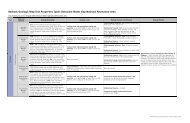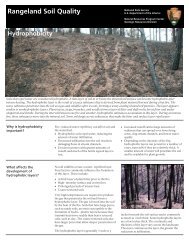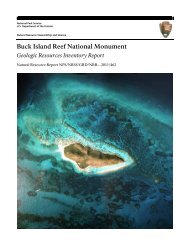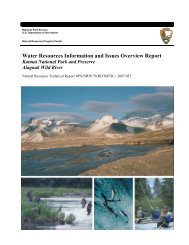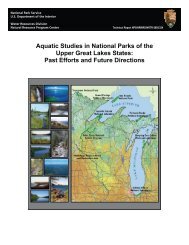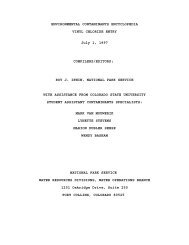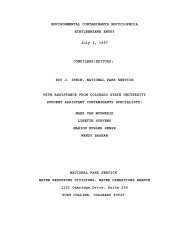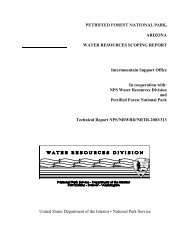ENVIRONMENTAL CONTAMINANTS ENCYCLOPEDIA ...
ENVIRONMENTAL CONTAMINANTS ENCYCLOPEDIA ...
ENVIRONMENTAL CONTAMINANTS ENCYCLOPEDIA ...
You also want an ePaper? Increase the reach of your titles
YUMPU automatically turns print PDFs into web optimized ePapers that Google loves.
of the Kow and other information, strong bioaccumulation in the<br />
human food chain is not expected to occur [867]. However,<br />
naphthalene exposure of cows and chickens could lead to the<br />
presence of naphthalene in milk and eggs [766].<br />
During the Exxon Valdez spill, bioconcentration explained the<br />
buildup of PAHs in tissues better than biomagnification; most<br />
accumulation was of an equilibrium partitioning nature across the<br />
gills rather than from the food chain [971]. Immature fish seem to<br />
have higher bioconcentration of PAHs than adults, perhaps because<br />
their PAH breakdown systems are not fully developed and at times<br />
perhaps because of a higher percentage of lipid tissues (yolk<br />
tissues, etc) [971] (confirmed by Jerry Neff, Battelle Ocean<br />
Sciences, Duxbury, MA, personal communication 1996).<br />
The simple bio-concentration factor (concentration in<br />
fish:concentration in water) of naphthalene 426, while for<br />
benzo(a)anthracene it is 10,000 and for pyrene, 2690 [832].<br />
The log bioconcentration factor (log BCF) for naphthalene<br />
ranges from 1.64 - 4.11 for a variety of fish and aquatic<br />
invertebrates [848]. Naphthalene is readily metabolized in fish<br />
[849].<br />
Coho salmon were exposed to a dilute water soluble fraction<br />
(WSF) of Prudhoe Bay crude oil for five weeks. They accumulated<br />
the more highly alkylated naphthalenes in muscle tissue faster than<br />
the less-substituted aromatics [851]:<br />
HYDROCARBON CONCENTRATION (PPB) BIOACCUMULATION<br />
Water Muscle Tissue FACTOR<br />
Naphthalene 4 240 60<br />
1-Methylnaphthalene<br />
4 400 100<br />
2-Methylnaphthalene<br />
4 560 140<br />
C2-Naphthalenes 10 850 85.0<br />
C3-Naphthalenes 6 680 113.3<br />
For invertebrates, depuration naphthalene parent compound is<br />
rapid when the organism is placed in water free of pollutant<br />
[849,885]. During a constant exposure of 22 ppb total<br />
naphthalenes, amphipods reached a threshold of accumulation after<br />
about seven days, and the majority of naphthalenes present were<br />
alkylnaphthalenes [885]. Bioconcentration of naphthalenes by<br />
amphipods was greatest (about 1000 times) in flow through systems.<br />
In the sediment exposure system, no naphthalene was present in<br />
amphipod tissues after four days and by the 18th day only dimethyl<br />
naphthalenes were present [885].<br />
Biomagnification of petroleum hydrocarbons through the food<br />
chain has not been demonstrated in marine mammals, probably due to<br />
their cytochrome P450 system [713]. The bioaccumulation and<br />
persistence of PAHs in the food chain is opposite that seen for<br />
other chemicals such as some PCBs and certain other organochlorines<br />
which tend to concentrate in the top predators [713]. Because it<br />
is the species lower in the food chain that concentrate PAHs, those<br />
species (like bowhead whales and walrus) that feed at that lower



